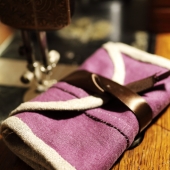
 12
12












 7
7




Visit Redhawk's soil series: https://permies.com/wiki/redhawk-soil
How permies.com works: https://permies.com/wiki/34193/permies-works-links-threads
 4
4




Jay Angler wrote:It's important to notice in the video, that all the scraps had similar colour values. It can be a challenge to get lots of scraps that all have something in their tone that makes them complement each other.







 2
2




"Also, just as you want men to do to you, do the same way to them" (Luke 6:31)
 5
5




Invasive plants are Earth's way of insisting we notice her medicines. Stephen Herrod Buhner
Everyone learns what works by learning what doesn't work. Stephen Herrod Buhner
 6
6




 6
6




'Theoretically this level of creeping Orwellian dynamics should ramp up our awareness, but what happens instead is that each alert becomes less and less effective because we're incredibly stupid.' - Jerry Holkins
 2
2











 5
5











 8
8





Visit Redhawk's soil series: https://permies.com/wiki/redhawk-soil
How permies.com works: https://permies.com/wiki/34193/permies-works-links-threads
 2
2




K Kaba wrote:Scrap binding.







 3
3











 9
9




 4
4




 4
4











 4
4




 3
3




 3
3




K Kaba wrote:Ooh I think I will move a wood mallet to my sewing gear, that looks like a useful option between hand flattening and firing up an iron.







 5
5




Visit Redhawk's soil series: https://permies.com/wiki/redhawk-soil
How permies.com works: https://permies.com/wiki/34193/permies-works-links-threads
 3
3











 2
2











 2
2

















 2
2




r ranson wrote:I like the way the second dress is made, but would it work for someone who is well endowed if I put darts in the bodice?
"Also, just as you want men to do to you, do the same way to them" (Luke 6:31)
 2
2




What if you replaced the bodice part with the front panels of your button shirt you sewed, that you've already altered to fit you?r ranson wrote:I like the way the second dress is made, but would it work for someone who is well endowed if I put darts in the bodice?
Visit Redhawk's soil series: https://permies.com/wiki/redhawk-soil
How permies.com works: https://permies.com/wiki/34193/permies-works-links-threads
 3
3




'What we do now echoes in eternity.' Marcus Aurelius
How Permies Works Dr. Redhawk's Epic Soil Series
 4
4











 6
6




 8
8




Trying to achieve self-reliance on a tiny suburban plot: http://gardenofgaladriel.blogspot.com
 5
5




G Freden wrote:I like to browse Project Gutenberg for out of copyright books; there are some interesting craft-related ones. This one, The Book of Needlework Economies, edited by Flora Klickmann, has a section called the economy quilt (to find it on the text, search for it using CTRL-f). She describes the method for making it: she would save up all small fabric and yarn scraps; the larger scraps are folded into small square/rectangular pouches--three or four inches when folded--and filled a third full of the smallest scraps, none bigger than one inch square, then sew them closed. She saved up these pouches until she had enough to sew them together into a full quilt.
I certainly have a lot of scraps myself, and could no doubt make a full economy quilt if I set about it! The little pouches could be sewn by hand a few at a time, and the full quilt could be hand or machine sewn.
I quite enjoyed reading the whole book, and there are others like it at www.gutenberg.org
 4
4




Visit Redhawk's soil series: https://permies.com/wiki/redhawk-soil
How permies.com works: https://permies.com/wiki/34193/permies-works-links-threads
 4
4




Jay Angler wrote:You guys are inspiring me. I bought a wool blanket a number of years back at the thrift shop, only to decide that the colour just didn't go with where I planned to put it. If I were to make a pieced quilt, could I use the wool blanket as the filling layer? Is quilt batting that different from a woven blanket?
"The only thing...more expensive than education is ignorance."~Ben Franklin. "We can easily forgive a child who is afraid of the dark; the real tragedy of life is when men are afraid of the light." ~ Plato
 4
4




In fact, at one point I was thinking of making a coat out of it, but alas, I keep being given coats (one from a friend's mom who passed on, and one from a friend who was down-sizing for a big move). It's hard to justify the time for something I don't need. However, I don't have that many spare warm blankets for guests or for emergencies. Yes, technically in an emergency, ugly is fine, but reality is different. When the world is ugly, having something pretty to snuggle up in would make me feel cheerier and I can think of many people who would feel the same - they would tolerate ugly, but they'd welcome a little "pretty".is there something you'd prefer to make of it, to wear - a jacket, hats, scarves, mittens, etc? What would give you the most use and pleasure, in it?
Visit Redhawk's soil series: https://permies.com/wiki/redhawk-soil
How permies.com works: https://permies.com/wiki/34193/permies-works-links-threads
 3
3













 3
3











 3
3

















 7
7





"Also, just as you want men to do to you, do the same way to them" (Luke 6:31)
 4
4













 6
6




 6
6




![Filename: GLquiltAll-14Jul2011.jpg
Description: [Thumbnail for GLquiltAll-14Jul2011.jpg]](/t/148706/a/179713/GLquiltAll-14Jul2011.jpg)





|
You would be much easier to understand if you took that bucket off of your head. And that goes for the tiny ad too!
The new purple deck of permaculture playing cards
https://www.kickstarter.com/projects/paulwheaton/garden-cards
|








